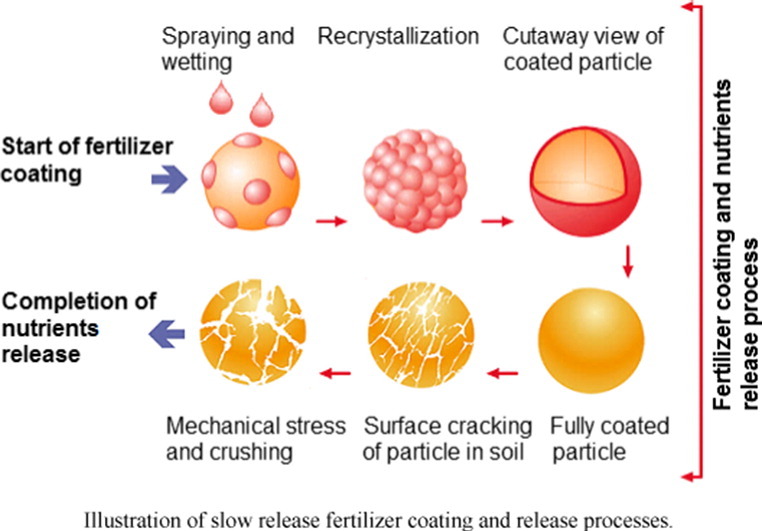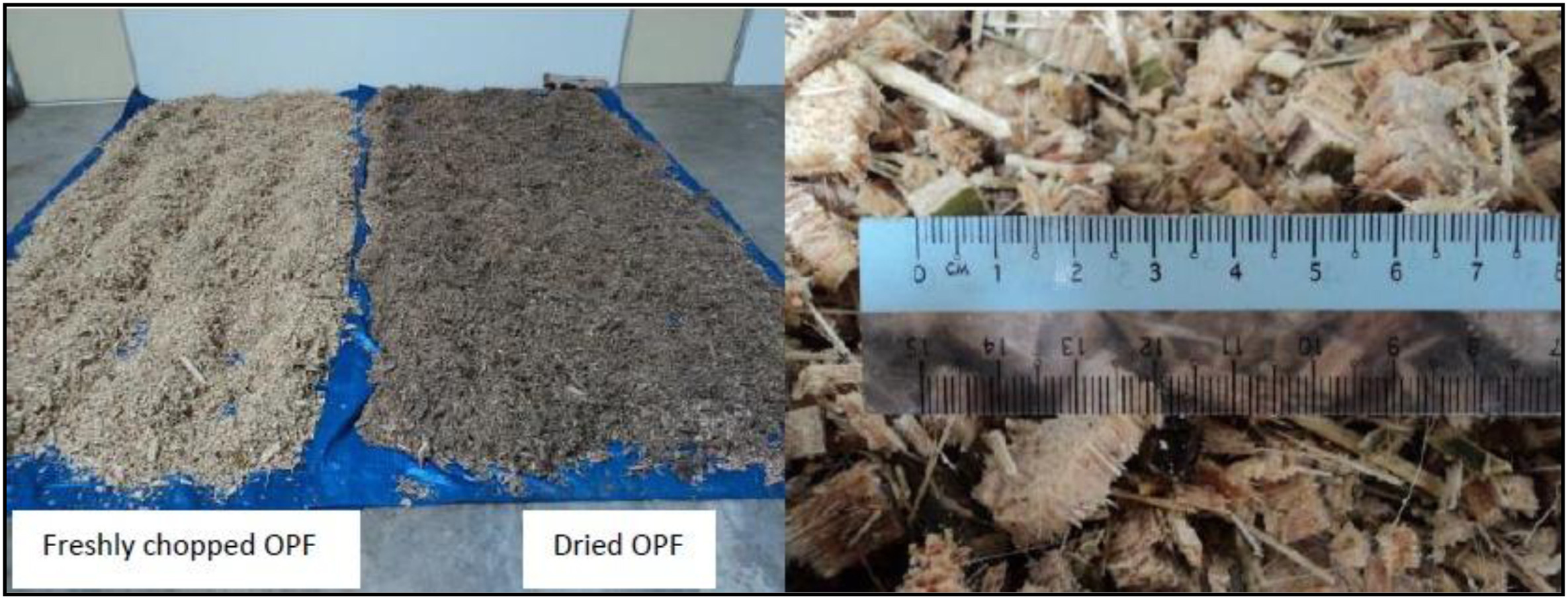Research Success Stories
Developing countries are consuming major part of the global urea production with an anticipated nitrogen use efficiency of 20 to 35%. The release of excess nitrogen in the soil is not only detrimental to the environment but also lessens the efficiency of the conventional urea. The urea performance can be enhanced by encapsulating it with slow release coating materials and synchronizing the nutrients' release with the plant up-taking. However, the present cost of most of the coated fertilizers is considerably higher than the conventional fertilizers. The high cost factor prevents their widespread use in mainstream agriculture. This paper documents a review of literature related to the global urea market, issues pertaining to the conventional urea use, natural and synthetic materials for slow release urea and fluidized bed spray coating process. The aim of the current review is to develop technical understanding of the conventional and non-conventional coating materials and associated spray coating mechanism for slow release urea production. The study also investigated the potential of starch as the coating material in relation to the coatings tested previously for controlled release fertilizers.
Posted on: January 2016
Authored: Shaharin Anwar Sulaiman
The thermal degradation behavior of rubber seed shell, high density polyethylene waste, and the binary mixtures of high density polyethylene and rubber seed shell (0.2:0.8 weight ratio) are compared in pyrolysis, gasification, and catalytic gasification process at different heating rate of 10, 20, 30 and 50 K min-1 in temperature range of 323-1173 K using thermogravimetric analysis equipment. It is observed that there are one, two, and three stages of decomposition occurring in high density polyethylene, rubber seed shell, and the binary mixtures respectively regardless of the process involved. The activation energies, EA and pre-exponential factor, A are generated using one step integral method based on first order rate of reaction. Besides that, the synergistic effect on the binary mixtures is also investigated for the three different processes involved. It is found that the EA and A values for the binary mixtures are lower than the pure high density polyethylene but comparable to pure rubber seed shell regardless of the processes involved. In addition, it is also observed that the EA and A values are slightly lower when catalyst is added in the binary mixtures compared to the absence of catalyst in the gasification process.
Posted on: May 2014
Authored: Shaharin Anwar Sulaiman
Catalytic co-gasification is an important tar reforming technique, which may appreciably improve the quality of syngas through tar reforming reaction. In this study, wood chips (WC) were co-gasified with two coconut wastes, namely coconut shells (CS) and coconut fronds (CF), in a downdraft gasifier. The dolomite and limestone were used as tar reforming mediums. The effect of the blending ratio, catalyst type, biomass type and catalyst to biomass loading on gas composition and heating value of the syngas was investigated for different WC/CS and WC/CF blends. The results revealed that the WC/CS blending ratio of 70:30 produces the highest H2 amount (11.70 vol.%), which was 31% higher than the H2 amount of the other blends. The HHVsyngas of 70:30 blend was measured about 4.96 MJ/Nm3, which was also higher among all the tested blends. The co-gasification of 70:30 blend of WC/CS, when compared with same blending ratio WC/CF, produced two times higher CO, 60% higher H2 and 75% higher HHVsyngas. During catalytic co-gasification of WC/CS blends with dolomite and limestone, the dolomite yielded 24%, 13.8% and 25.6% increment in CO, H2, and CH4, respectively. It is concluded that the coconut wastes can be substituted or co-gasified with wood after carrying out some major changes in a gasifier geometry.
Posted on: October 2018
Authored: Shaharin Anwar Sulaiman
Malaysia has abundant but underutilized oil palm fronds. Although the gasification of biomass using preheated inlet air as a gasifying medium is considered an efficient and environmentally friendly method, previous studies were limited to certain types of biomass wastes and gasifier designs. Hence, the effects of preheating the gasifying air on oil palm fronds gasification in a single throat downdraft gasifier are presented in this paper. In addition, the effects of varying the flow rate of the gasifying air and the moisture content of the feedstock on the outputs of oil palm fronds gasification were studied. A response surface methodology was used for the design of the experiment and the analysis of the results. The results showed that preheating the gasifying air to 500 °C increased the concentrations of CO from 22.49 to 24.98%, that of CH4 from 1.98 to 2.87%, and that of H2 from 9.67 to 13.58% on dry basis in the producer gas at a 10% feedstock moisture content. Conversely, the dry basis concentrations of CO, CH4, and H2 decreased from 22.49, 1.98 and 9.67% to 12.01, 1.44 and 5.45%, respectively, as the moisture content increased from 10 to 20%. The airflow rate was also proven to significantly affect the quality of the resulting producer gas.
Posted on: December 2014
Authored: Shaharin Anwar Sulaiman
Gasification has emerged as a prominent technique to convert biomass, coal, plastic, and municipals wastes sludge (generated from agriculture, industrial, and domestics, urban centers) into energy in the form of gaseous products. However, co-gasification of these materials has many advantages, such as desired product yield and uninterrupted feedstock supply as well as the sustainable utilization and disposal of these wastes. Numerous reviews have been documented based on the gasification of individual materials of biomass and coal, nevertheless, very few reviews have been reported on the process of co-gasification. In co-gasification, the effect of parameters becomes very important when dealing with the co-gasification of different mixed materials. The objective of this review to study the effect of temperature, blending ratio, and equivalence ratio (ER) on catalytic co-gasification of biomass-coal, biomass-plastic, biomass-sewage sludge, and mixed plastic blends. In addition, the effects of these parameters on gaseous products, heating values, tar formation, and gasification performance have been analyzed. It is also important to specify the ranges of parameters for the feed combinations in catalytic co-gasification that will provide a guideline for researchers and commercial enterprises to investigate co-gasification. For temperature from 650 to 750 °C found good for hydrogen rich syngas production. Whereas, the ratio of biomass 50% or above and ER of 0.20 and 0.25 were found good for higher hydrogen and lower CO2 and tar production. Moreover, the current issues are related to technology, operational problems, policy requirements and route map for commercial success of co-gasification technology have been highlighted.
Posted on: December 2020
Authored: Shaharin Anwar Sulaiman




